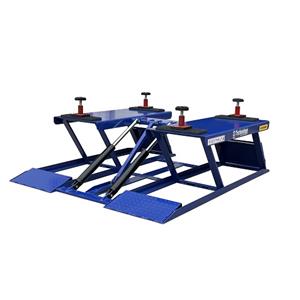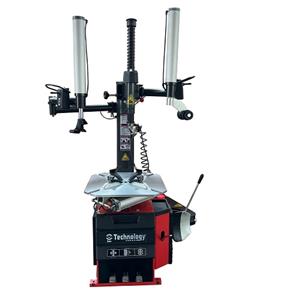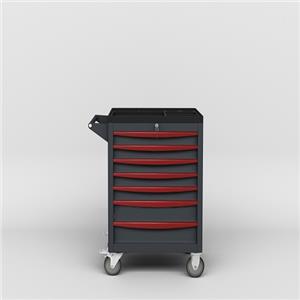steel and other material price increasing affects the price car lift, tire changer, wheel balancer and wheel alignment
Analysis of factors affecting the change of steel price
The periodic fluctuation of steel price is the comprehensive reflection of the market cycle of steel industry. It is the result of the chain effect of price benefit investment capacity supply and demand. On the whole, the following factors mainly affect the change of steel price: first, production cost, which is the basis of steel price change; Second, the relationship between supply and demand, which is the key factor affecting the change of steel price; Third, the market system. A defective market system may amplify the imbalance between supply and demand, resulting in ups and downs in prices.
1. Cost element composition
Raw material cost
Iron ore is the most important raw material for steel production. The price and quantity of imported ore and domestic ore purchased by different iron and steel enterprises are different, and the technical and economic indicators of their blast furnaces are different. Therefore, the raw material costs of each iron and steel enterprise vary greatly.
Energy cost
Coke is a necessary reducing agent, fuel and material column framework for iron and steel production. At the same time, steel production also consumes a large number of public media such as coking coal, water, electricity, wind, gas and oil. The price and quantity of these public media purchased by different iron and steel enterprises are different, and their technical and economic indicators are different. Therefore, the cost of energy and public media varies greatly among iron and steel enterprises.
Labor cost
Labor cost is an important cost in the iron and steel industry. Although there is a big gap between China's physical labor productivity and developed countries, the gap between unit man hour cost (mainly per capita income level) is larger. Therefore, the labor cost of China's steel ton shipment is about one-third of that of developed countries and one-half of that of foreign countries. On the whole, the labor cost gap between China's iron and steel enterprises is not obvious.
Depreciation and interest
Large equipment investment is an important feature of the iron and steel industry. Globally, except that Japan adopts rapid depreciation, steel enterprises in the United States, Europe, South Korea and China generally adopt normal depreciation, while Russia has the slowest depreciation rate. As the iron and steel industry is a capital intensive industry, the asset liability ratio of China's iron and steel enterprises is generally more than 50%. Therefore, the change of national monetary policy will seriously affect the financial expenses of iron and steel enterprises
Affected by the substantial growth of iron and steel production capacity and the shortage of iron and steel raw fuel supply, the prices of iron ore, coke and other iron and steel raw fuels have risen sharply since 2001. Especially since 2004, the long-term contract price of imported iron ore has risen sharply year after year, which makes the iron ore procurement cost of iron and steel enterprises rise sharply. Compared with 2002, the long-term contract price of international iron ore increased by 288.9% in 2007. In 2007, the average procurement cost of domestic iron concentrate powder of large and medium-sized iron and steel enterprises increased by 108.2% compared with 2003, and the procurement cost of coking coal increased by 91.7%.
The rise of raw fuel prices has greatly increased the production costs of iron and steel enterprises. The average cost of steel-making pig iron in large and medium-sized iron and steel enterprises in 2007 increased by 71.8% compared with 2003, that of ordinary carbon slab increased by 56.2% and that of hot-rolled coil increased by 56.6%.
In mid February 2008, Vale, the world's largest iron ore supplier, successively reached an agreement with major global steel manufacturers on the supply price of iron ore in 2008, and the benchmark price further increased by 65% on the basis of last year. Further increase the production cost of domestic iron and steel enterprises.
2. Equipment and technology level
During the Tenth Five Year Plan period, the investment of iron and steel enterprises in improving equipment level, scientific and technological progress, energy conservation and consumption reduction increased significantly, which significantly improved the equipment level of China's iron and steel industry, and made remarkable achievements in energy conservation and consumption reduction and comprehensive utilization, which played a great role in reducing costs.
3. Investment cost per ton of steel
As a capital intensive industry, the investment cost of iron and steel industry is also an important factor affecting the price of steel. Since 2001, the investment per ton of steel has shown a downward trend.
The main reasons for the sharp decline in investment per ton of steel during the Tenth Five Year Plan period are as follows:
First, the proportion of private enterprises has increased significantly. 2001-2003 is the period of great development of private enterprises. During this period, the product positioning of private enterprises is mostly based on low value-added products such as long wood and narrow band, and domestic equipment is usually used, with less investment and fast recovery. The general investment of one million tons is about 1 billion yuan, and the average comprehensive investment per ton of steel is only more than 1000 yuan.
Second, the level of equipment localization has been greatly improved and the investment cost has been saved. For example, a set of high-speed wire rod domestic equipment is only one fifth of that of imported equipment. Not only private enterprises use a large number of domestic equipment, but also some super large state-owned enterprises use more and more domestic equipment.
Third, with the large-scale and compact production of iron and steel industry, the benefit of investment is very obvious.
4. Relationship between supply and demand and economic cycle
Although the production cost is the basis for the price change of steel products. However, the relationship between supply and demand is an important factor affecting the price trend. When the cost is relatively stable, when the supply exceeds the demand, the price will fall; When demand exceeds supply, prices will rise. The following figure shows the changes of China's GDP growth rate and fixed asset investment growth rate. It can be seen that there is a strong correlation between steel prices and China's economic cycle.




